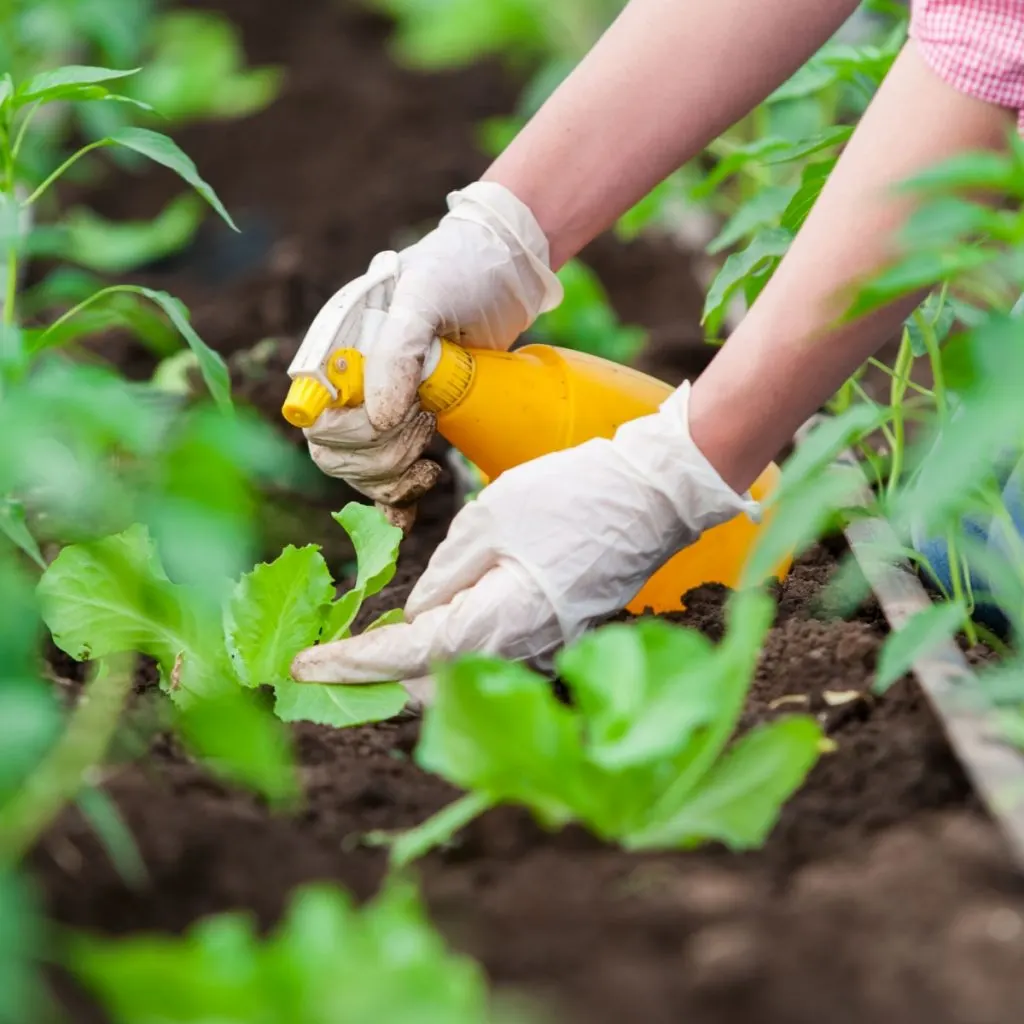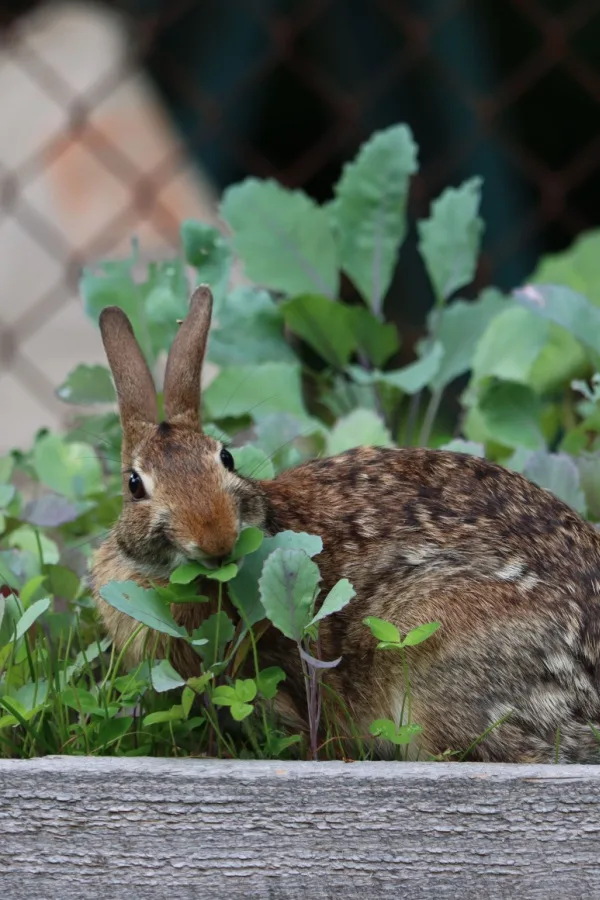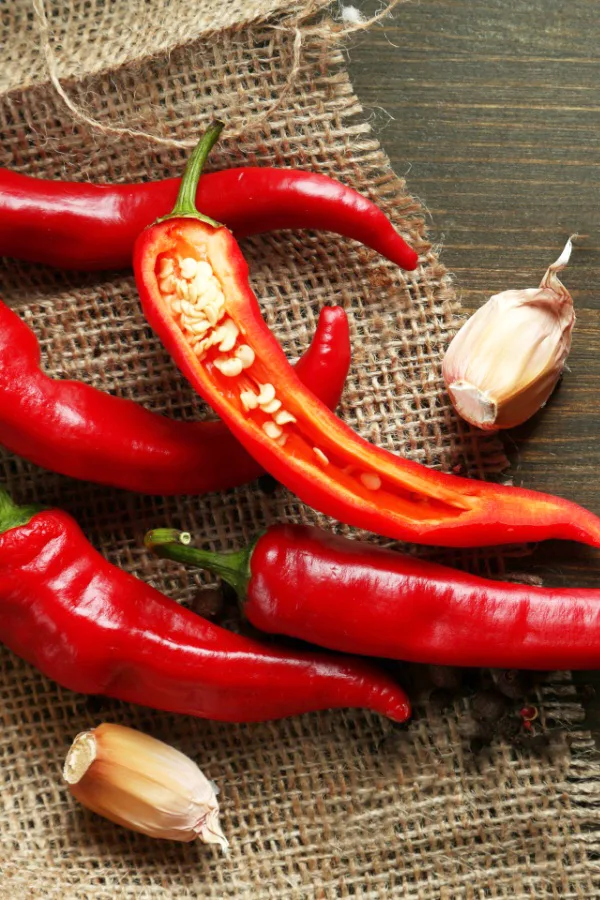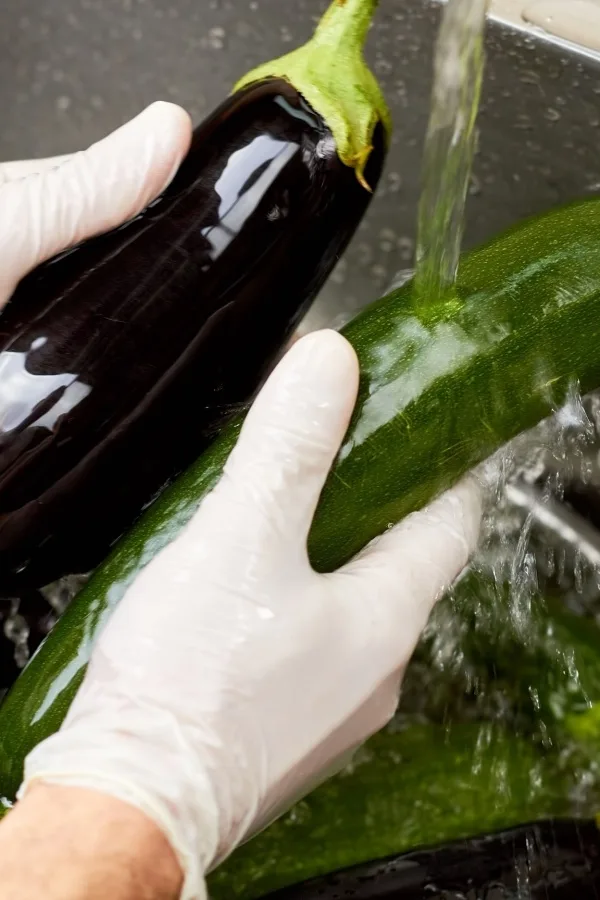If you are looking for an all-natural way to protect vegetable plants, flowers, and even bushes and shrubs from all kinds of animal and insect damage – then it’s time to start making and using your own homemade hot pepper spray!
Not only is hot pepper spray easy to make using simple ingredients, it’s also the perfect organic alternative to using harsh chemicals and commercial products that can often harm plants – and be dangerous to use around pets, children and adults.
What’s worse is that many commercial pesticides can also harm beneficial insects. So while you might be getting rid of a single pest, you are also wiping out pollinating insects like bees and butterflies that are vital in helping your plants flower or produce. But that is exactly where homemade hot pepper spray can help save the day!

Hot pepper spray works amazingly well to stop pests of all sizes from devouring your plants. From tiny insects that multiply quickly, to deer that can wipe out plants and bushes in just a just few bites – hot pepper spray is an effective tool to keep plants safe. The best part is that it can do so all without harming a single pollinator or beneficial insects.
With keeping your plants safe in mind – here’s a detailed look at what you will need to make hot pepper spray – how it works, and the secrets to applying it correctly to make it as effective as possible!
How To Make & Use Hot Pepper Spray
How It Works
When sprayed on the foliage of plants, hot pepper spray covers the stems and leaves of a plant with a coating of heat that serves as a huge deterrent.
When animals try to take a bit or nibble of the foliage, they immediately get blasted with spicy heat. Usually, one or two bites of a hot leaf is plenty to get them looking elsewhere for their next meal.
Hot pepper spray is effective at deterring pests of all shapes and sizes. Squirrels, chipmunks, rabbits, and deer all have a history of helping themselves to garden flowers and vegetables. But one bite of a sprayed plant and they will be running in the opposite direction. But it’s also very effective against insects.

Controlling Insects
Insects like aphids can be devastating to garden crops. Not only ruining the foliage and fruit but also bringing in disease and other issues to your garden spaces. Hot pepper spray works great to deter these pests as well in the same way – with a spicy bite! (See, “How To Keep Aphids Out Of Your Garden”)
Hot pepper spray is actually hot enough that it can actually kill some insects like cabbage worms and spider mites. If the pests are already present on plants when the spray is applied, the capsaicin (the ingredient in hot peppers that provide the heat) in the spray is enough to take them out.
As an added bonus, as you will see below, the addition of garlic in the spray also helps to deter insects due to its strong odor. Pests like aphids, ants, beetles, borers, caterpillars, slugs, and whiteflies all steer clear when garlic is around, making the spray even more effective.
How To Make Homemade Hot Pepper Spray
Hot pepper spray can be made using a wide range of hot peppers. While using fresh peppers is effective and handy during gardening season, you can also use dried peppers, hot pepper flakes, or powdered peppers to make the spray.
The real secret to success is to use a pepper that is high on the heat scale. In fact, the hotter the pepper, the better. Varieties like Cayenne, Serrano, or Jalapeno peppers are all great choices.
Beyond the hot peppers, all you need to complete the mix in this recipe include water, garlic, and a mild liquid dish or biodegradable soap. Product Link: Mrs. Meyer’s Clean Day Biodegradable Liquid Dish Soap

The below recipe makes enough solution for a 1-gallon size sprayer, but you can easily reduce or increase the ratios depending on how many plants need to be protected.
Ingredients
- 10-12 fresh or dried hot peppers, or 5 tablespoons of hot pepper flakes, or 2 tablespoons of hot pepper powder
- 1 gallon of water
- 6 garlic cloves
- A few drops of biodegradable dish soap
Instructions – Make & Use Hot Pepper Spray
If using fresh or dried peppers, begin by chopping them and mincing the garlic. The garlic adds a big boost as its scent will help to repel additional insects when included. Make sure when working with hot peppers of any sort that you wear gloves. The capsaicin in the peppers can do a number on your hands!
When using dried or fresh peppers – add them and the garlic to a large pot and heat the pot on low heat for about 5 minutes. This step helps the ingredients release more oils and become a bit more potent. Next, add the water and bring it to a simmer. Let the mixture simmer for 30 to 45 minutes on low heat. If using pepper powder, just heat the garlic for a few minutes and then add the water and powder.
Remove the pot from the heat and allow it to cool for at least 24 hours. This allows the water to absorb as much of the pepper heat as possible. Once the 24 hours are up, strain the mixture and place the liquid in a handheld or backpack sprayer.

Lastly, add in a couple drops of biodegradable dish soap into the mix in the sprayer. The soap helps the liquid stick to the foliage of the plants better. Your hot pepper spray is now ready to use to protect your plants!
You can keep the hot pepper solution for up to three months. Make sure to always mix the solution before using and keep it away from small children or pets when storing.
Using Hot Pepper Spray
Apply the hot pepper spray early in the morning after the morning dew has dried. As an alternative, you can also apply the solution late in the evening. You can use a backpack sprayer for large areas or a simple hand held bottle sprayer for smaller plants. Affiliate Product Link: Uineko Plastic Spray Bottle (4 Pack, 24 Oz, All-Purpose) Heavy Duty Spraying Bottles
Avoid spraying it during the hottest part of the day when the sun is out in full force. The plant’s foliage can actually burn. Not from the hot pepper liquid, but from moisture on the foliage with the sun’s rays.

The key to the success of the hot pepper spray is to keep plants constantly coated in the spicy solution. For best results, reapply the spray every 3 to 4 days and always after heavy rains or if you water overhead.
Wear protective eye coverings and gloves when using the hot pepper spray. The last thing you want is to get the solution in your eyes. Also, if you plan on harvesting any fruit or vegetables within a few days of spraying, wash the produce off to avoid having a spicy flavor added to the food.
Here’s to keeping your plants safe from all pests from little to big by making and using homemade hot pepper spray!
Simple Garden Life
Follow Our Facebook Page For Even More Great Tips! Simple Garden Life Facebook Page
Simple Garden Life is a website dedicated to keeping gardening fun, simple and enjoyable! We publish two new articles each week along with a new garden podcast episode every two weeks. This article may contain affiliate links.
